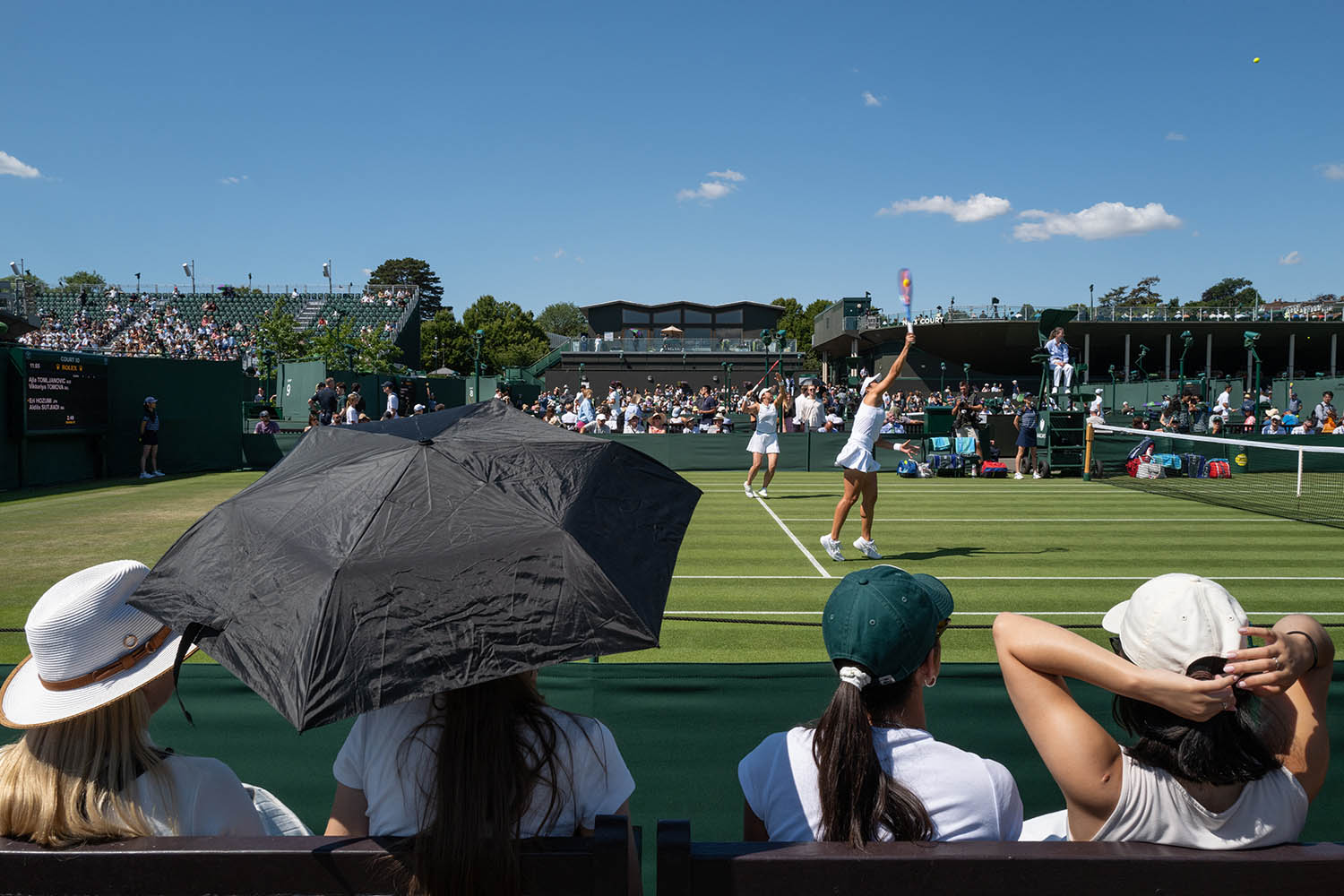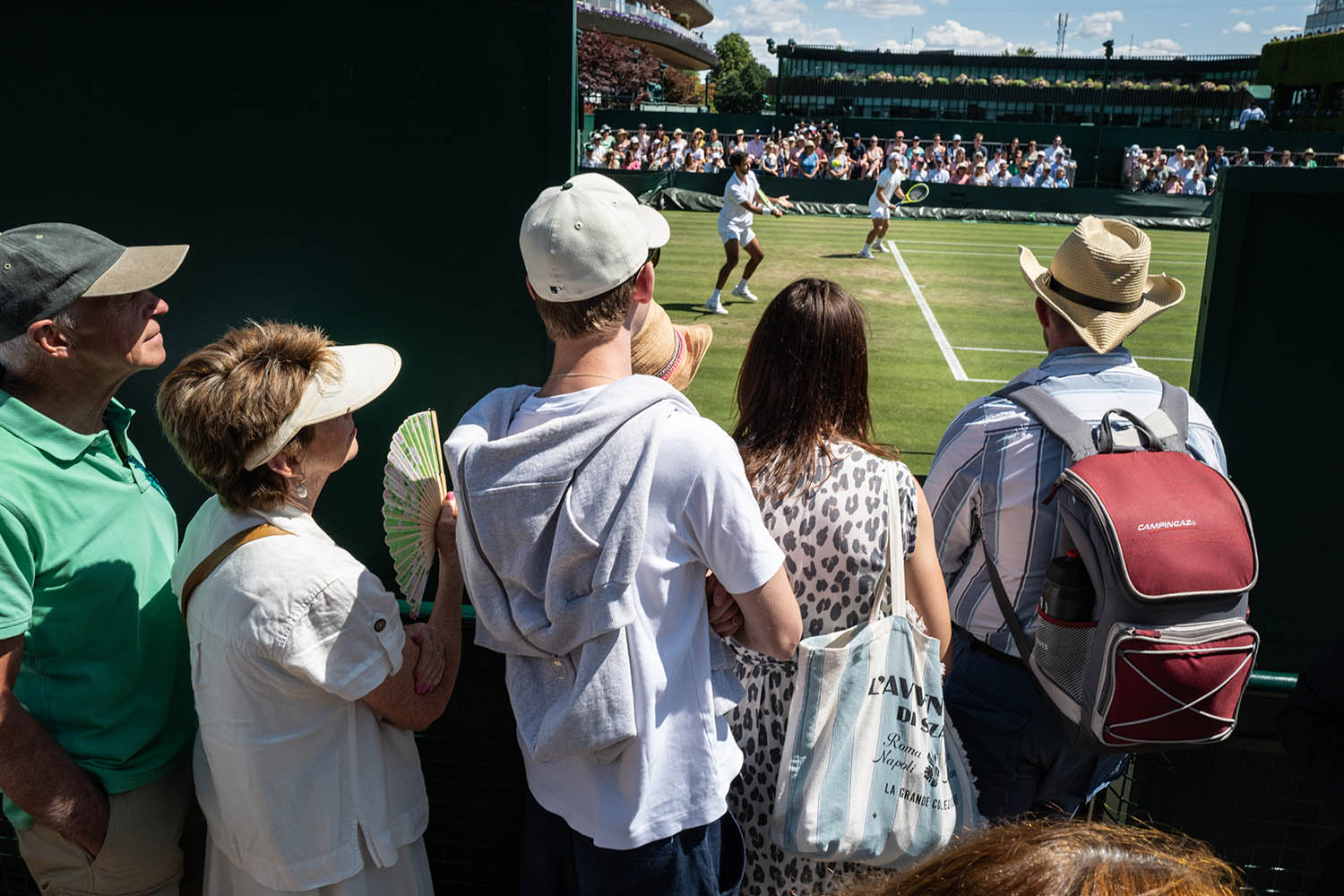Photographs by Andy Hall/The Observer
Yes, but what does it mean? What is Wimbledon for? Why does it seem to matter so much more than your average sporting event? The sport itself is important and often superb. But forehands and backhands are only part of the story. Neither the greatest champions nor the most agonised near-misser can tell us the complete meaning of the Championships.
It has been a few years since I was last at Wimbledon. It hasn’t changed. I hadn’t expected it to. It has just become slightly more like itself, both timeless and up to date. New champions, new generation of plucky Brits, the same hopes, the same agonies of despair.
Midsummer festival
Wimbledon always used to start a day or two after the June solstice; the All England Lawn Tennis Club no doubt realigned the planet to make the current later start possible. It has always been something of a fertility rite, like Stonehenge.
Edwardian idyll
Stands the church clock at 10 to three? / And is there Henman still for tea? There is more than a dash of nostalgia about Wimbledon: sharp memories of a time we never knew: when there were no troubles in the world, or at least none to bother us, when certainties were 10 a penny and all your problems would be sorted out by the servants.
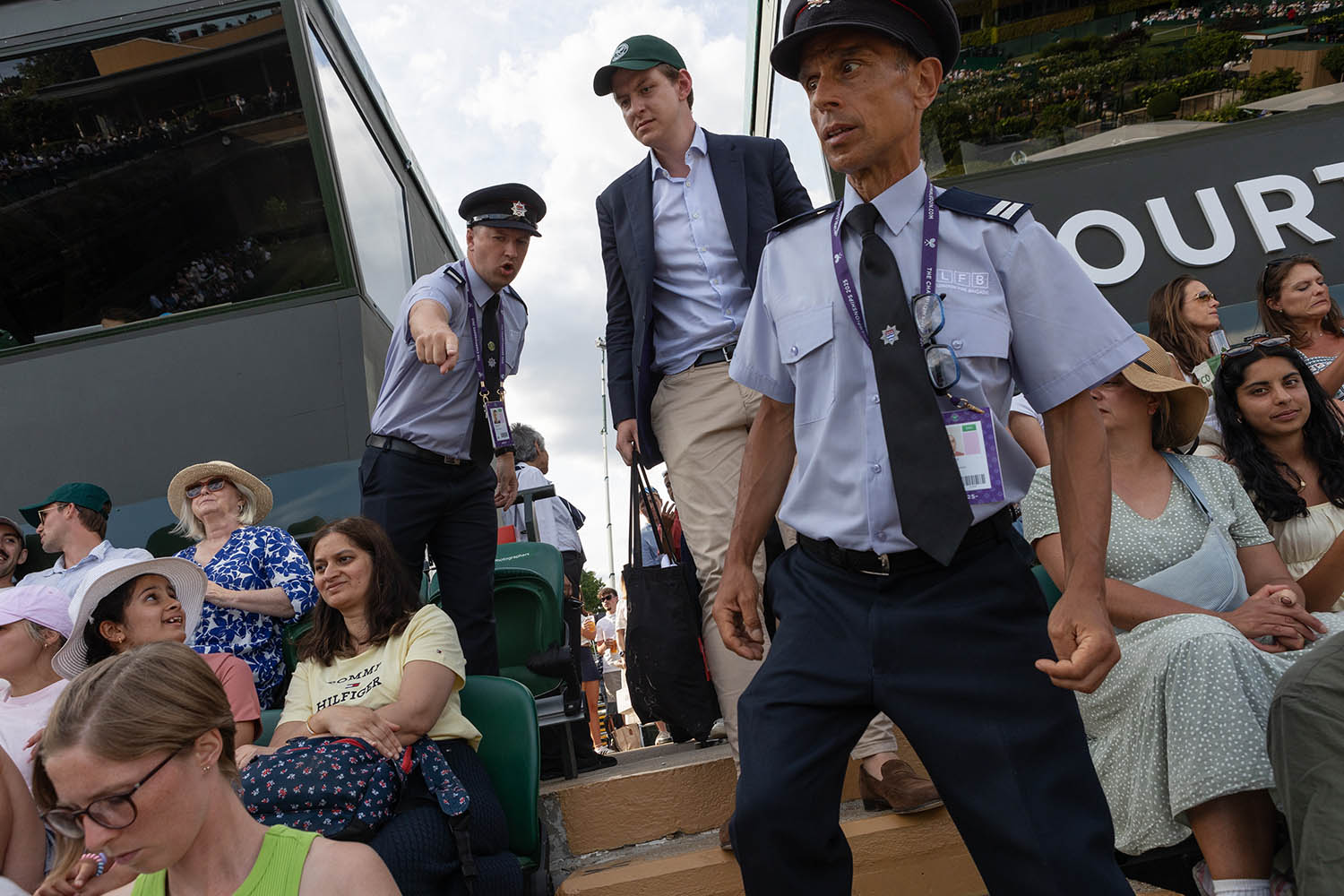
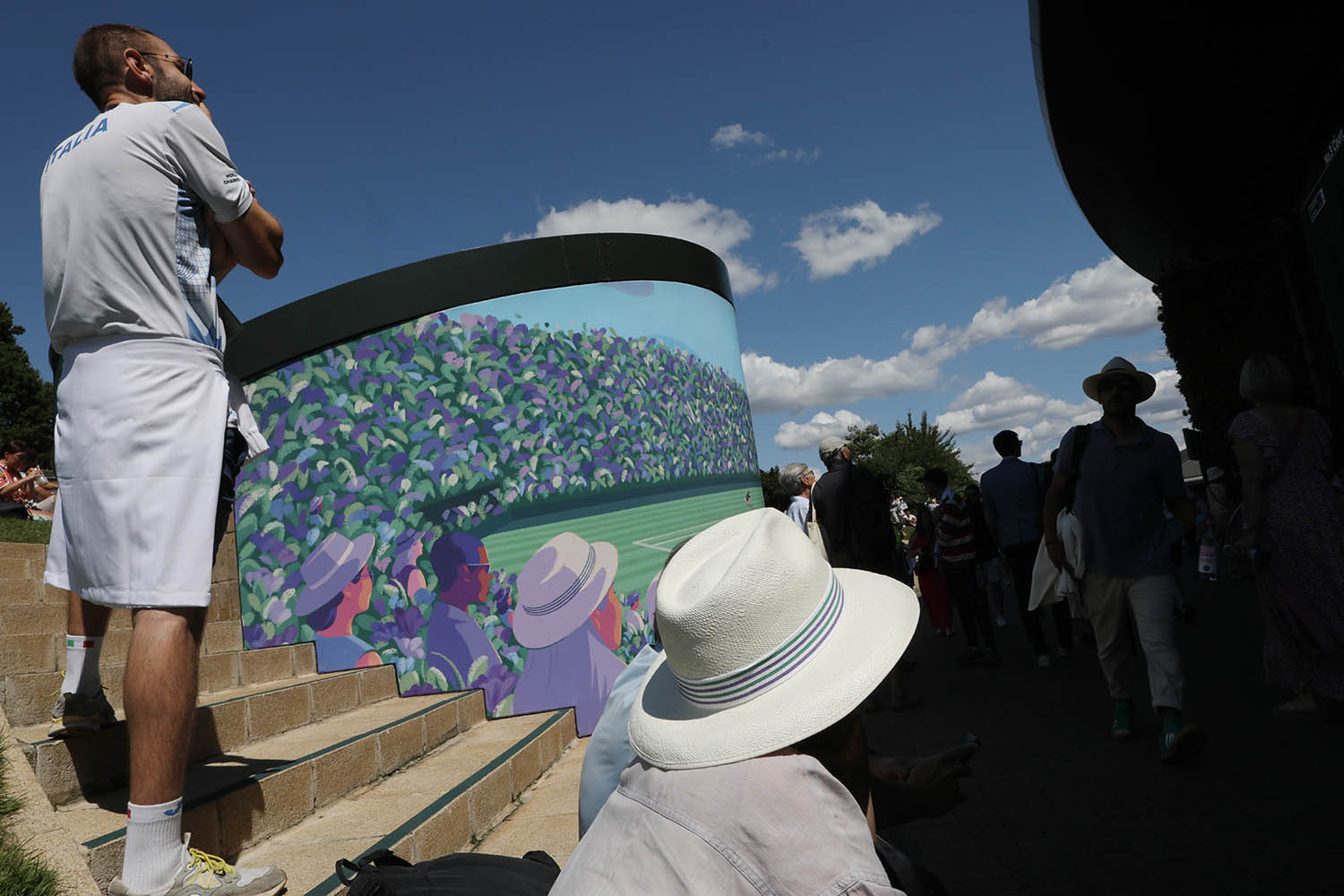
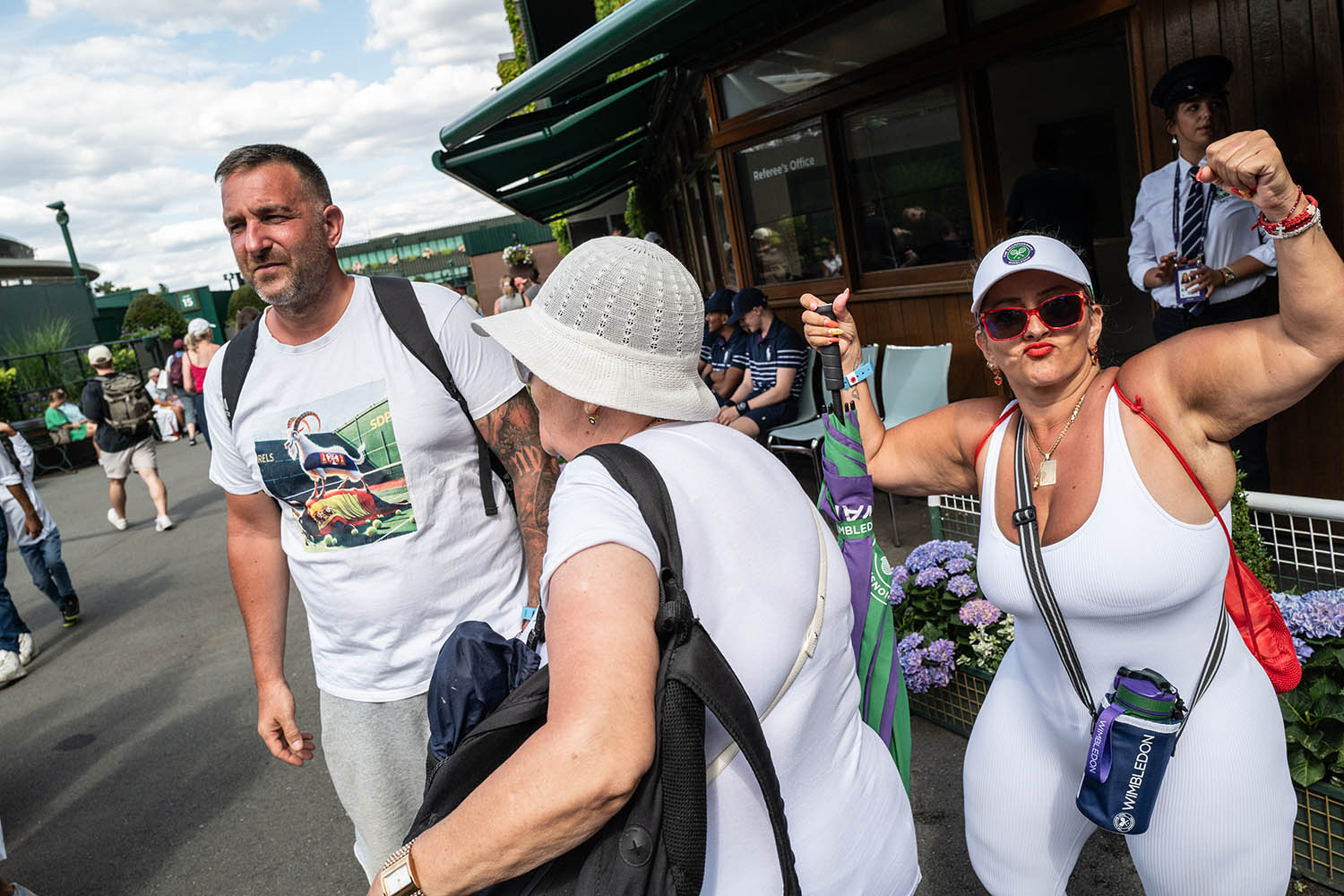
Patriotism
I’m losing the Brits correspondent! A running joke for years in the press box. Plenty of patriotism, but always wry, self-mocking, resigned. Then in 1996 a British lad named Tim Henman beat the No 5 seed Yevgeny Kafelnikov, at one point saving match points with successive aces.
Poor Tim was doomed ever after to play the third match on Centre, to take us year after year through yet another long dark teatime of the soul. “I can take a lot of positives from this,” he would always say at the end. He made the semi-finals four times and took the irony out of patriotic cheering. He prepared the way for one greater. I was on court when Andy Murray became the first British male for 77 years to win Wimbledon. The crowd still cheers for its own more in hope than expectation, but these days it’s an almost realistic hope. You could hear them cheering for Emma Raducanu in New Malden.
Weather
Organising outdoor events in the English summer is also a triumph of hope over expectation. I remember an announcement to the crowd: “There will be a further shah in about an ah.” And the shah fell as shahs do and we grumbled good-humouredly and took shelter. The roofs over Centre Court and No 1 Court have spoiled this pleasure but now we at least have the option of grumbling about the heat.
The theatre of cruelty
There is a hierarchy of sporting pleasures, though they can be savoured simultaneously on the great days. The lowest is partisanship, the second is drama and best of all is the pursuit and capture of excellence. Football is best for partisanship, but tennis does drama more reliably than any other sport in the calendar.
We owe this to the genius of medieval France who invented the scoring system, which guarantees the regular occurrence of big points, really big points and points on which the entire future of humankind depends. Centre Court is the most demanding sporting venue I have ever sat in, combining intimidating magnificence with appalling intimacy. Perhaps the most thrilling sound in sport is the silence before the serve on championship point.
When sport moves beyond drama and each player inspires the other to still greater levels of excellence we have the best sport can offer. Such times enthral people not specially interested in tennis and not terribly bothered about any sport. In 2008 Rafael Nadal beat Roger Federer over five sets and a little less than five hours. It would have been great sport at any venue but because it was Wimbledon it’s reckoned the greatest tennis match ever played.
This week has given us the wobbles of Carlos Alcaraz and some first-class flat-track bullying from Jannik Sinner. We also had the sad demolition of Jack Draper – another plucky Brit bites the dust.
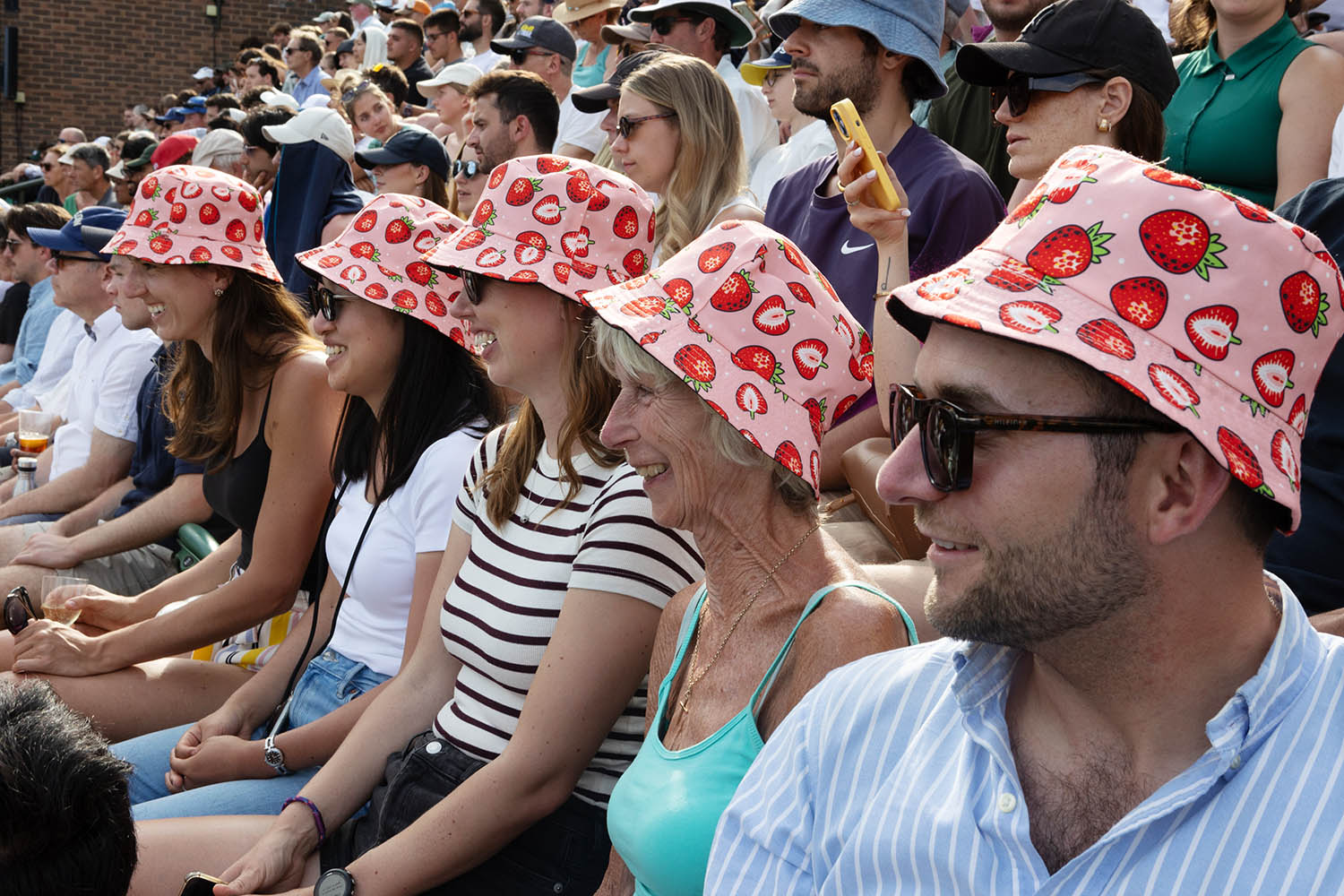
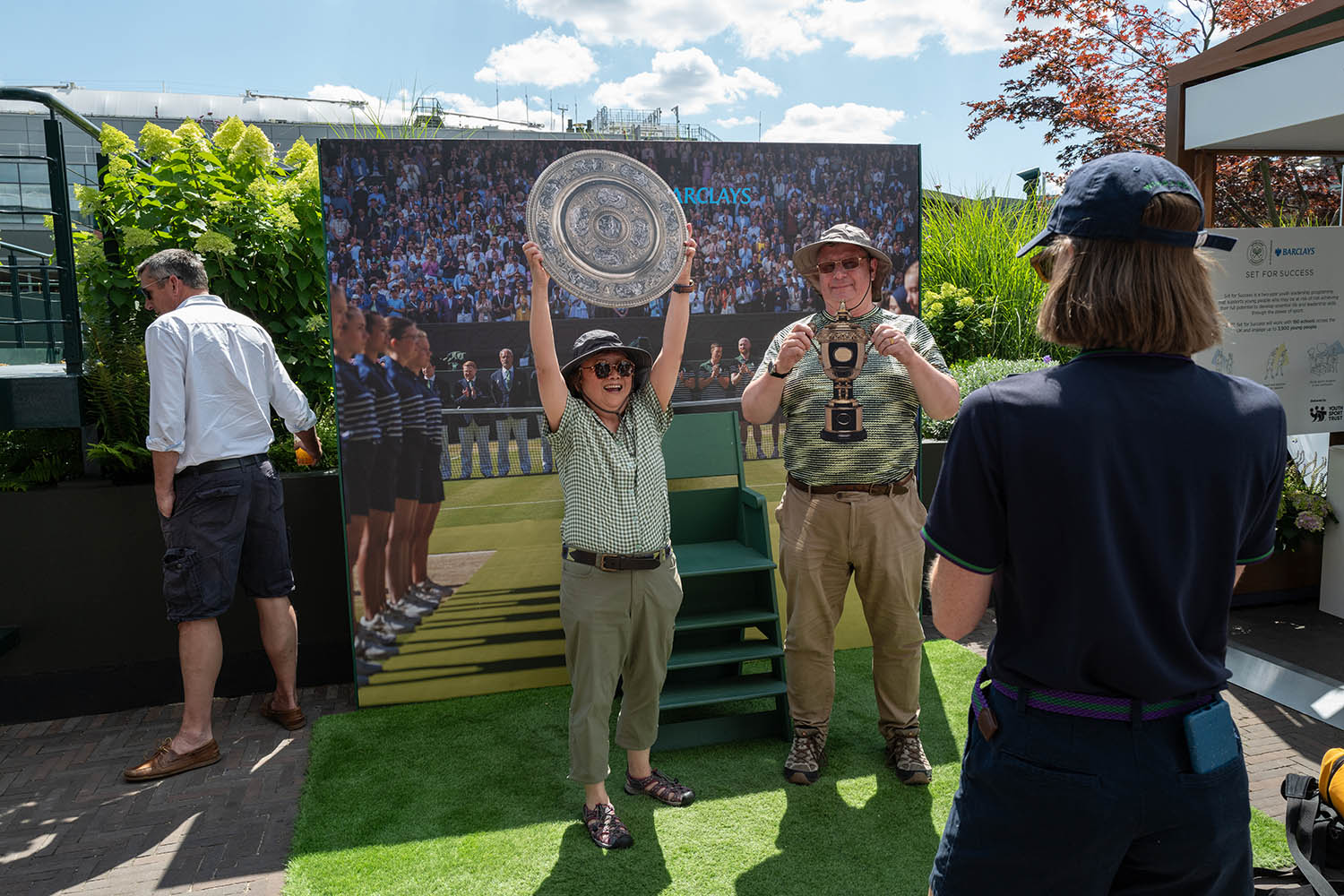
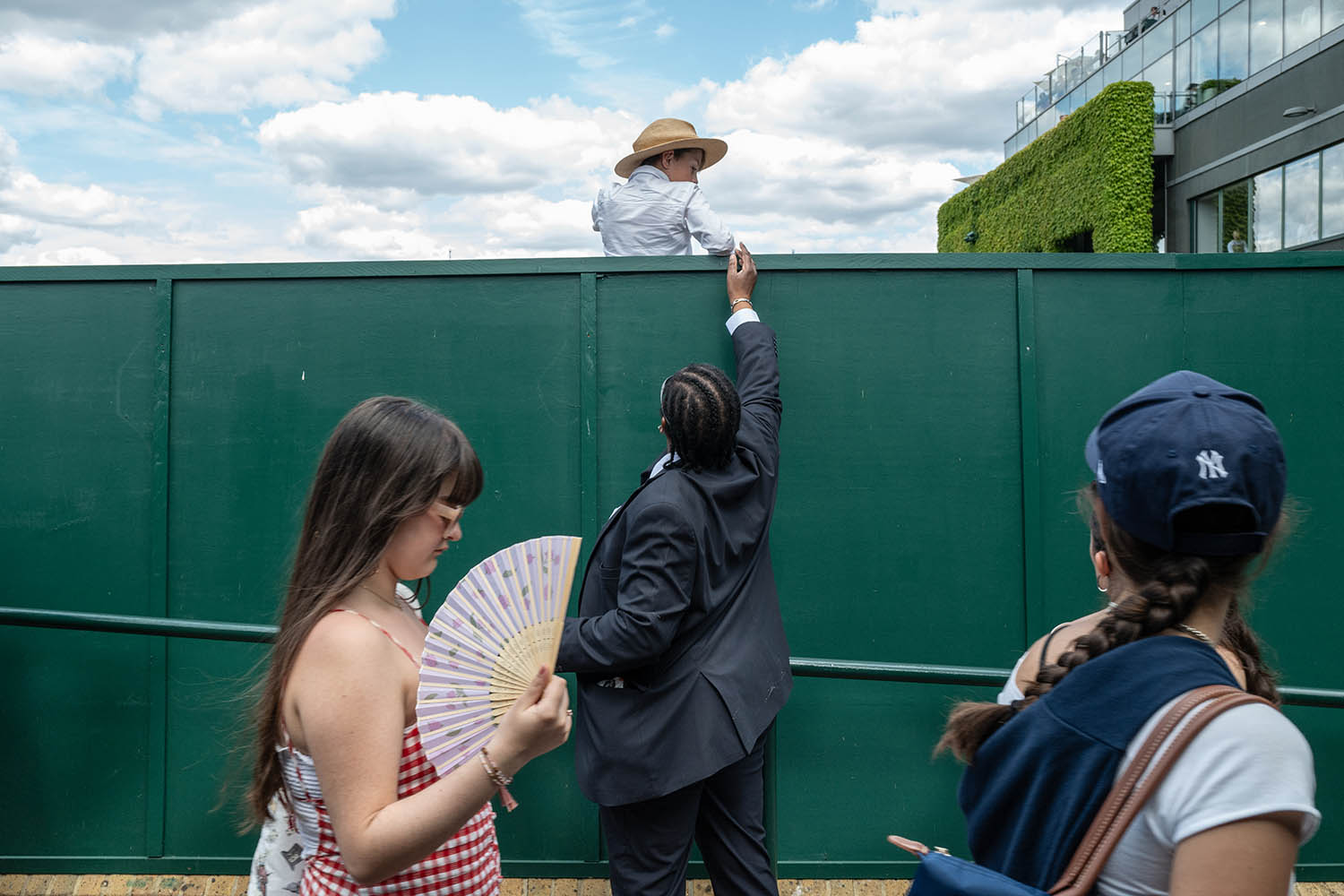
Englishness
Queuing. Queuing to get in. Queuing to get on court. Queuing for strawberries. Queuing for Pimm’s. Bumping into people and saying sorry. Cheering for the plucky Brit but applauding the opponent. Being nice. Being polite. Being slightly apologetic about being nice and polite. It’s not like that at the US Open, or for that matter, Wembley. I expected less courtesy this year, but it was still: no, no after you.
Social class
Like the Frenchman who always thought of sex, the English are always aware of social class. Wimbledon is self-consciously middle class flattered by outbreaks of minor royalty. Still, players no longer have to bow or curtsy before the Royal Box. That’s as near as we’re going to get to revolution.
Women
Now please note that the above is all very fine and very true, but it fades into nothing when you consider the real meaning of Wimbledon. And that’s women. Wimbledon has been the world’s great festival of the female ever since they first played in 1884 and Maud Watson beat her sister Lilian in the final.
The first female superstar of sport was Suzanne Lenglen, who won Wimbledon every year between 1919 and 1923, playing with shocking aggression, no corset and a bandeau. Those in the queue for her matches sang: “There’s a Lenglen trail a-winding…”
There are no lads’ outings to Wimbledon. When a man goes to Wimbledon he’s generally accompanying a woman. At Wimbledon every day is Ladies’ Day. Is it because women are more interested in drama than partisanship? Discuss.
Virginia Wade stepped on to Centre Court in 1977 wearing a pink cardy and won the final against Betty Stove. It was Jubilee year and the Queen, though puzzled by the lack of horses, was there to hand over the trophy.
Here at Wimbledon you will find a million views of feminism and femininity. There was the superb Martina Navratilova adding unprecedented levels of fitness and winning nine Wimbledon singles titles. And there was Anna Kournikova not actually winning anything but making a fortune from a shock-absorbing bra.
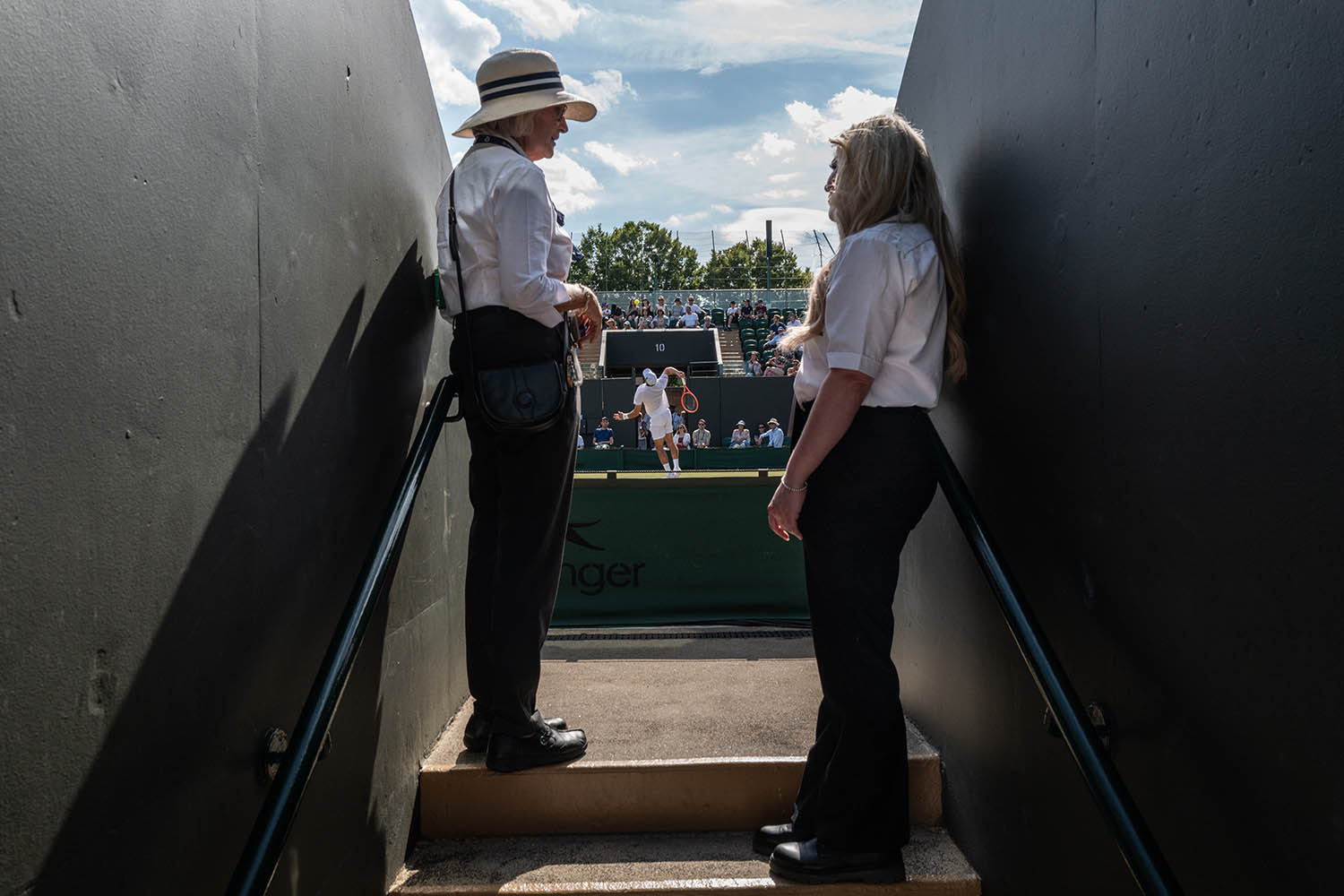
Stewards overlooking the play at court no. 3
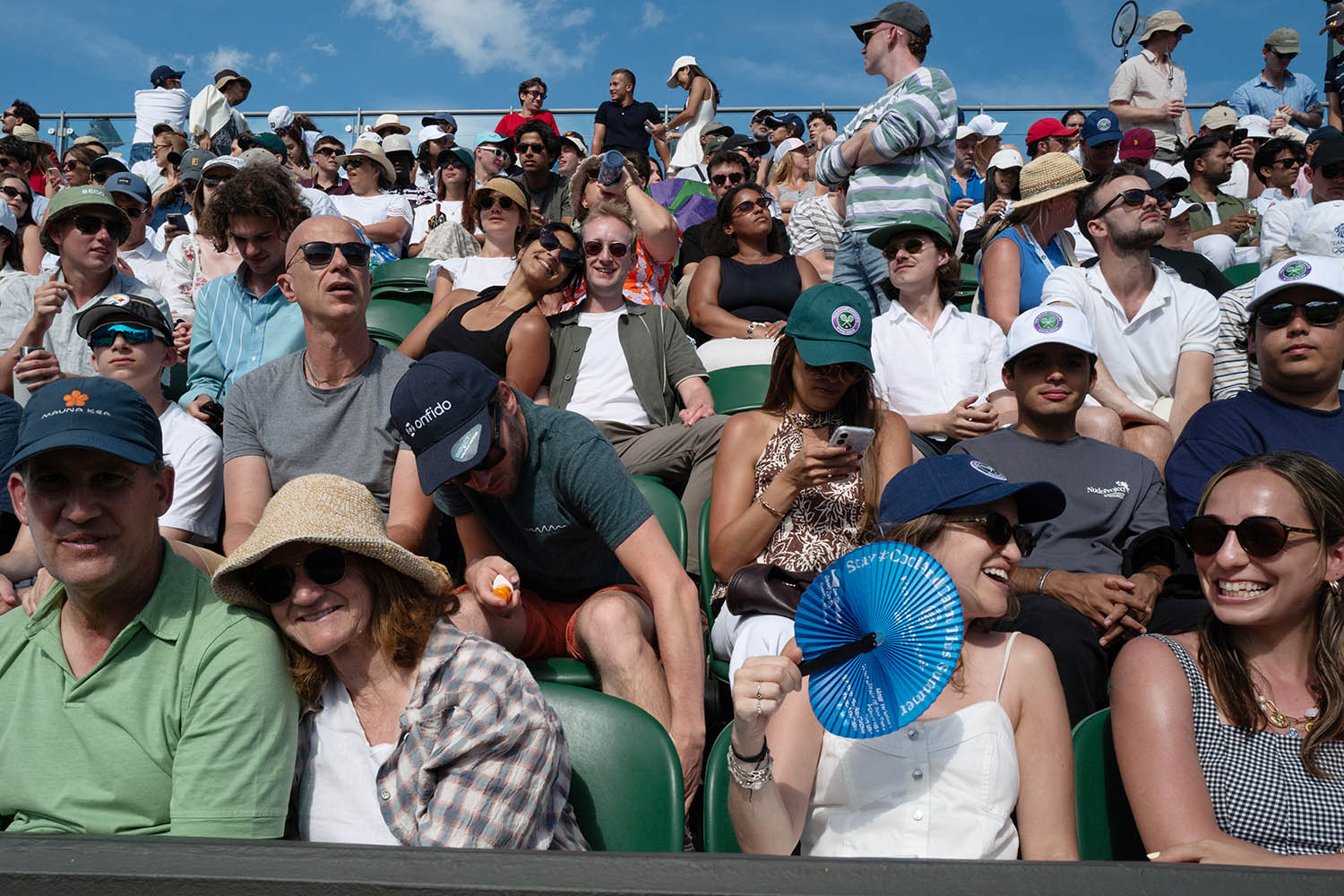
The crowds at court no.12
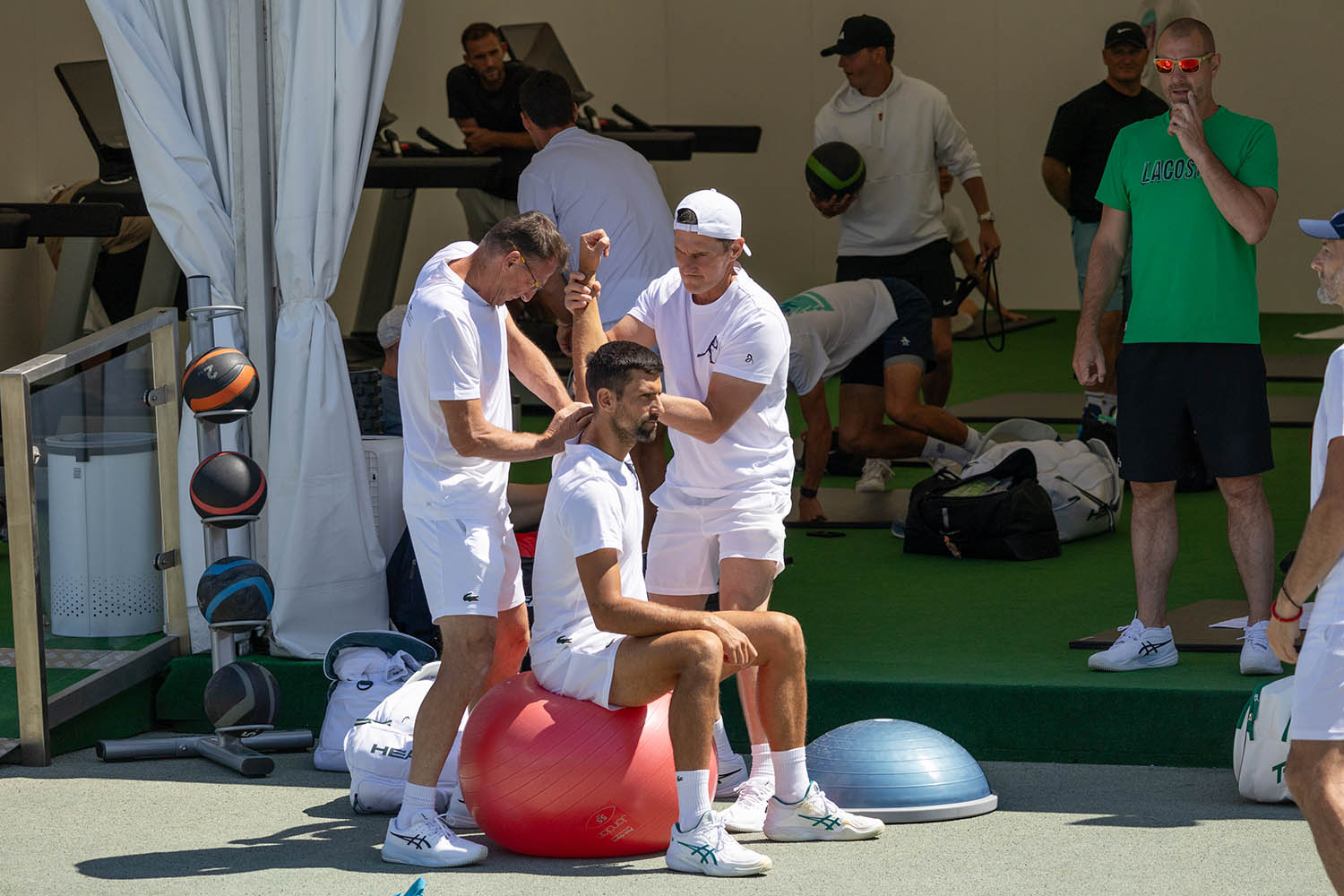
Djokovic get's some physio done before his match against Daniel Evans.
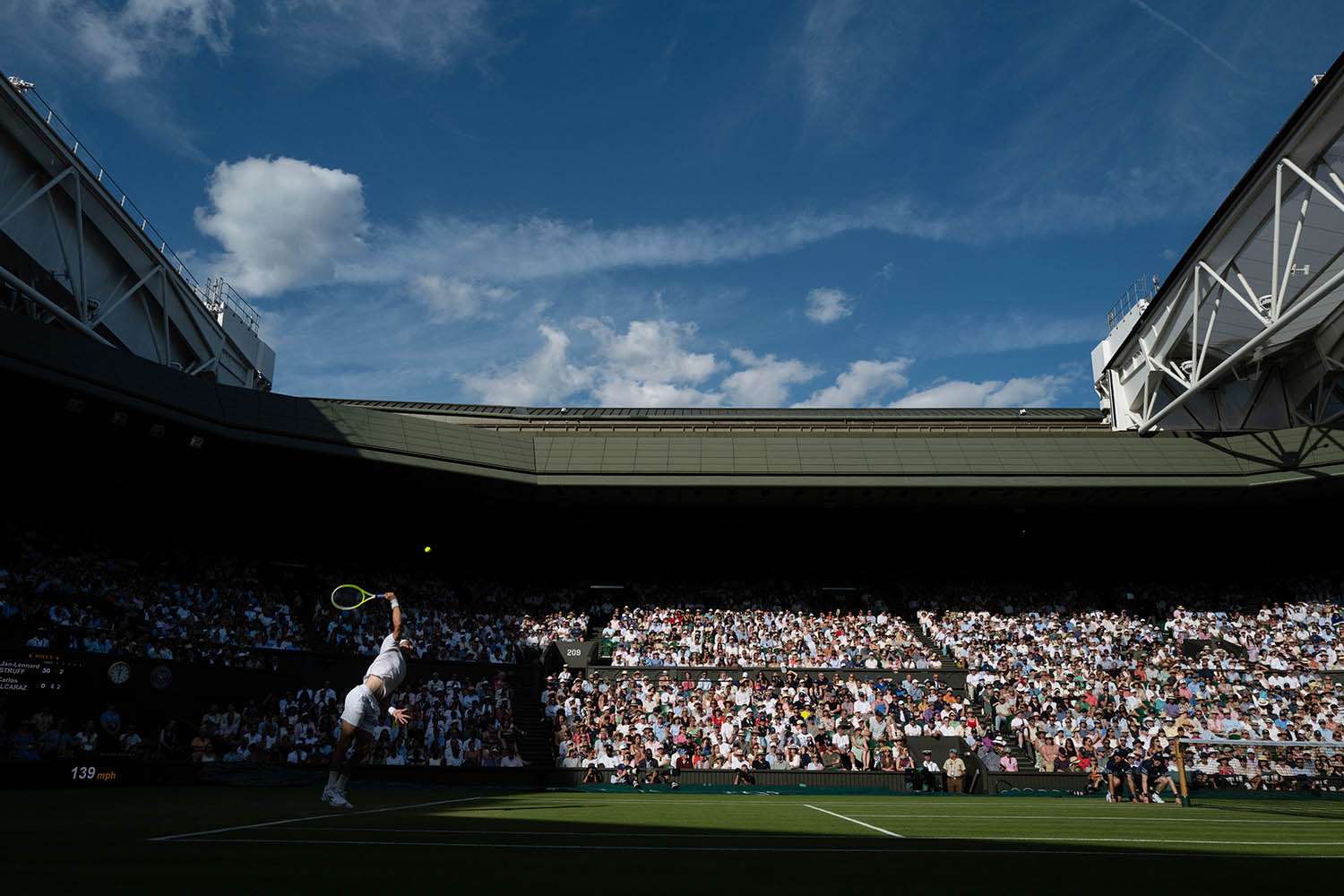
Jan Lennard-Struff serves against Alcaraz during their match on Centre Court
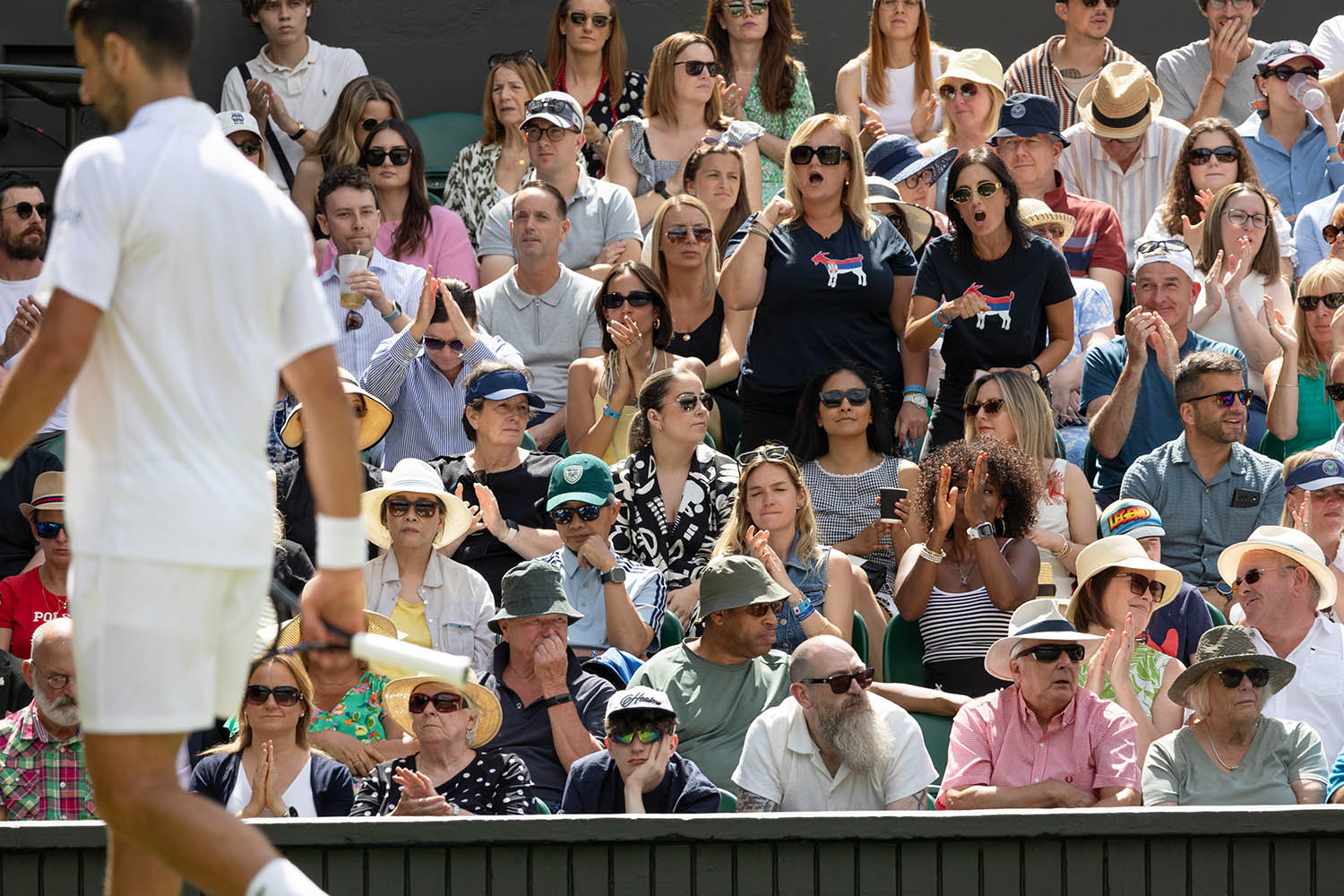
Djokovic fans watch him play against Britain's Daniel Evans in Centre Court.
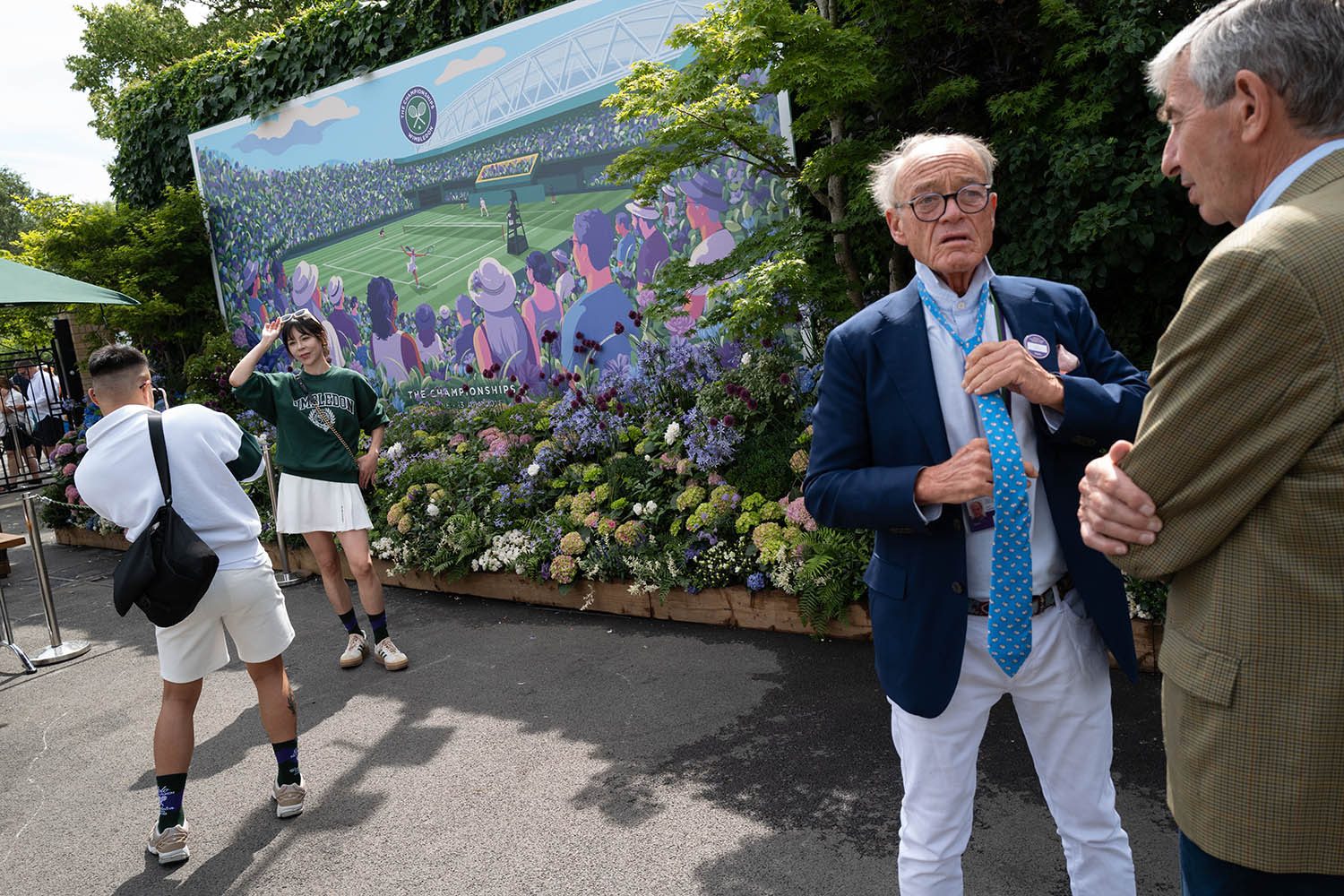
Long-time LTA member Peter Seanrook puts on his tie.
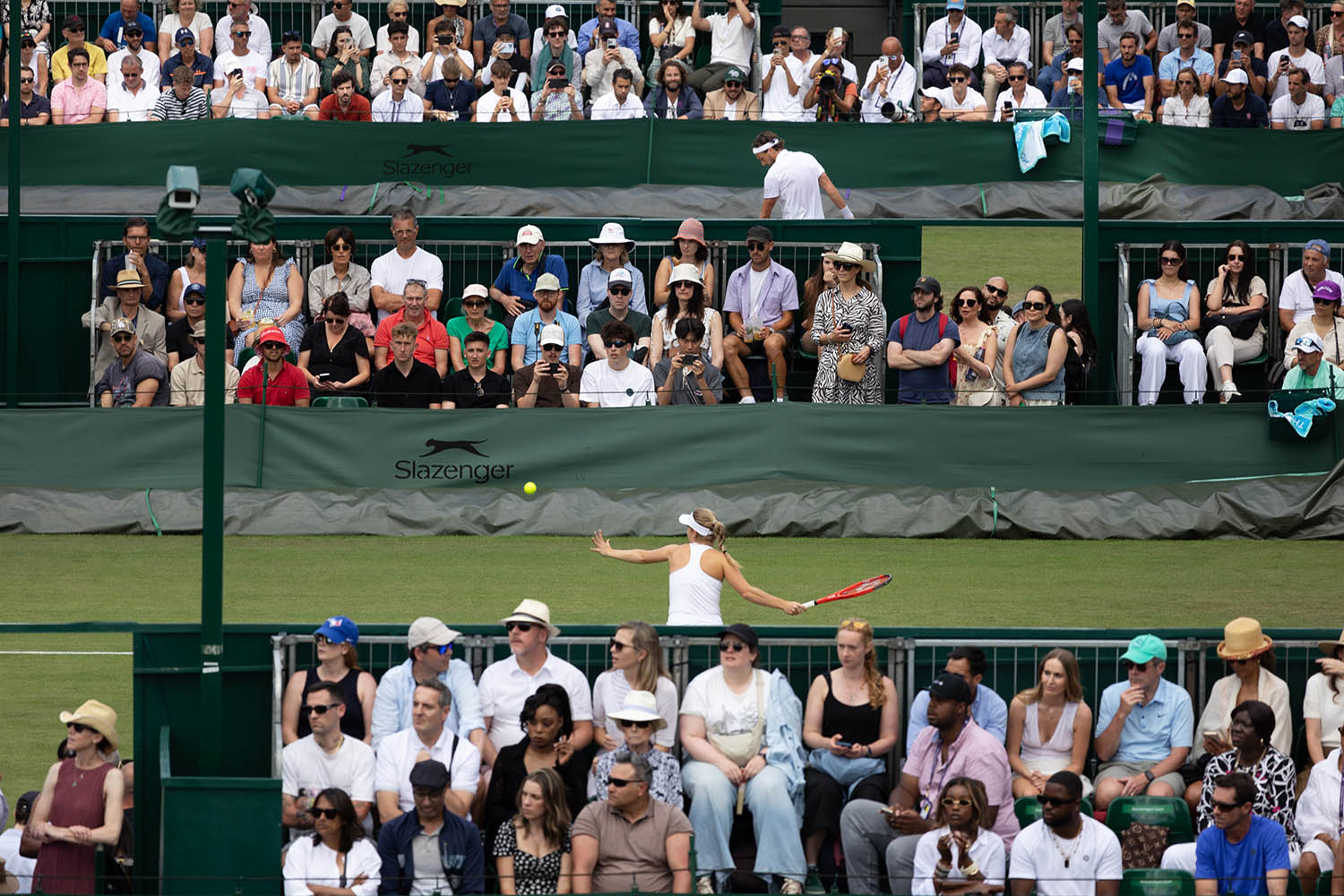
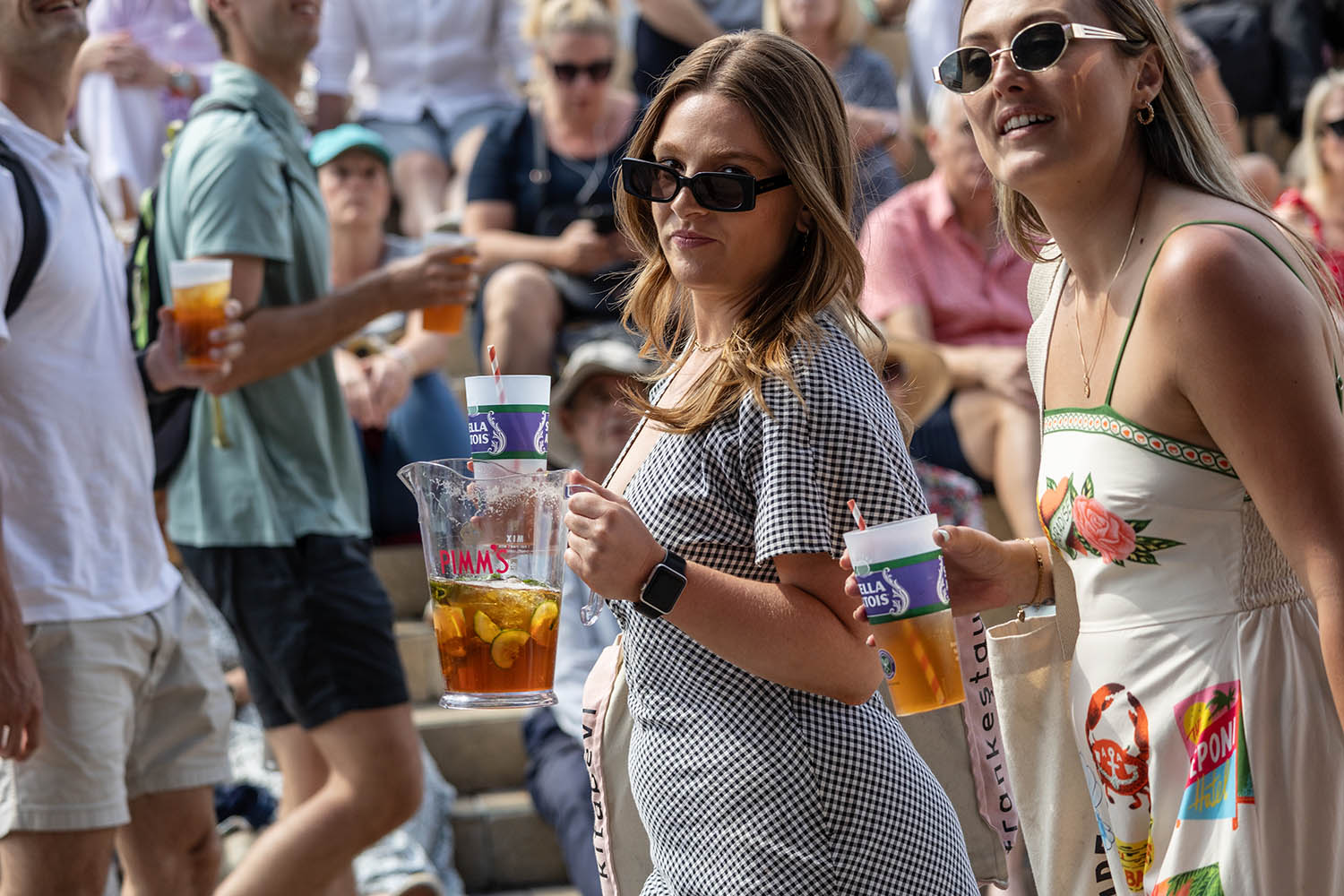
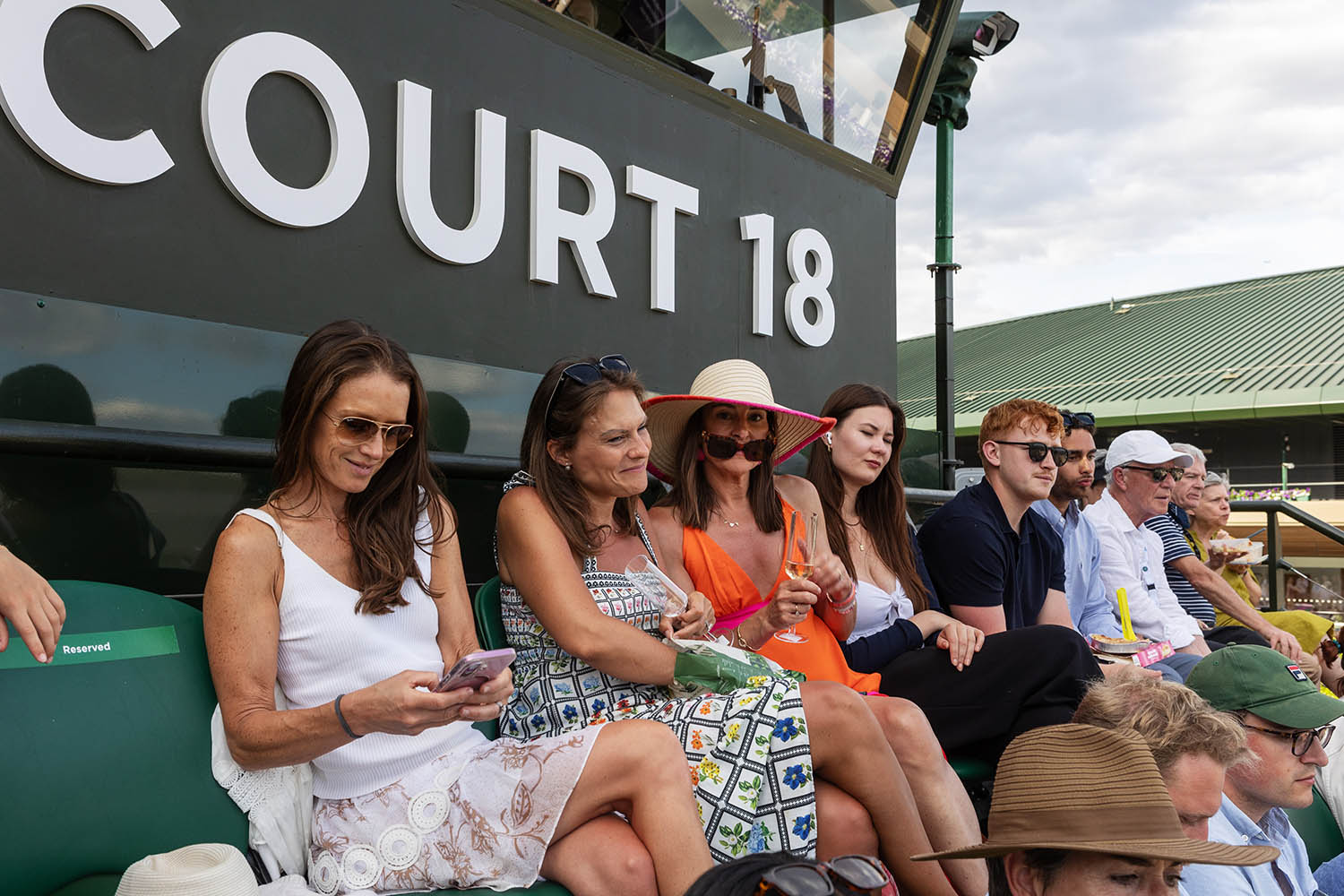
Spectators at court no. 18
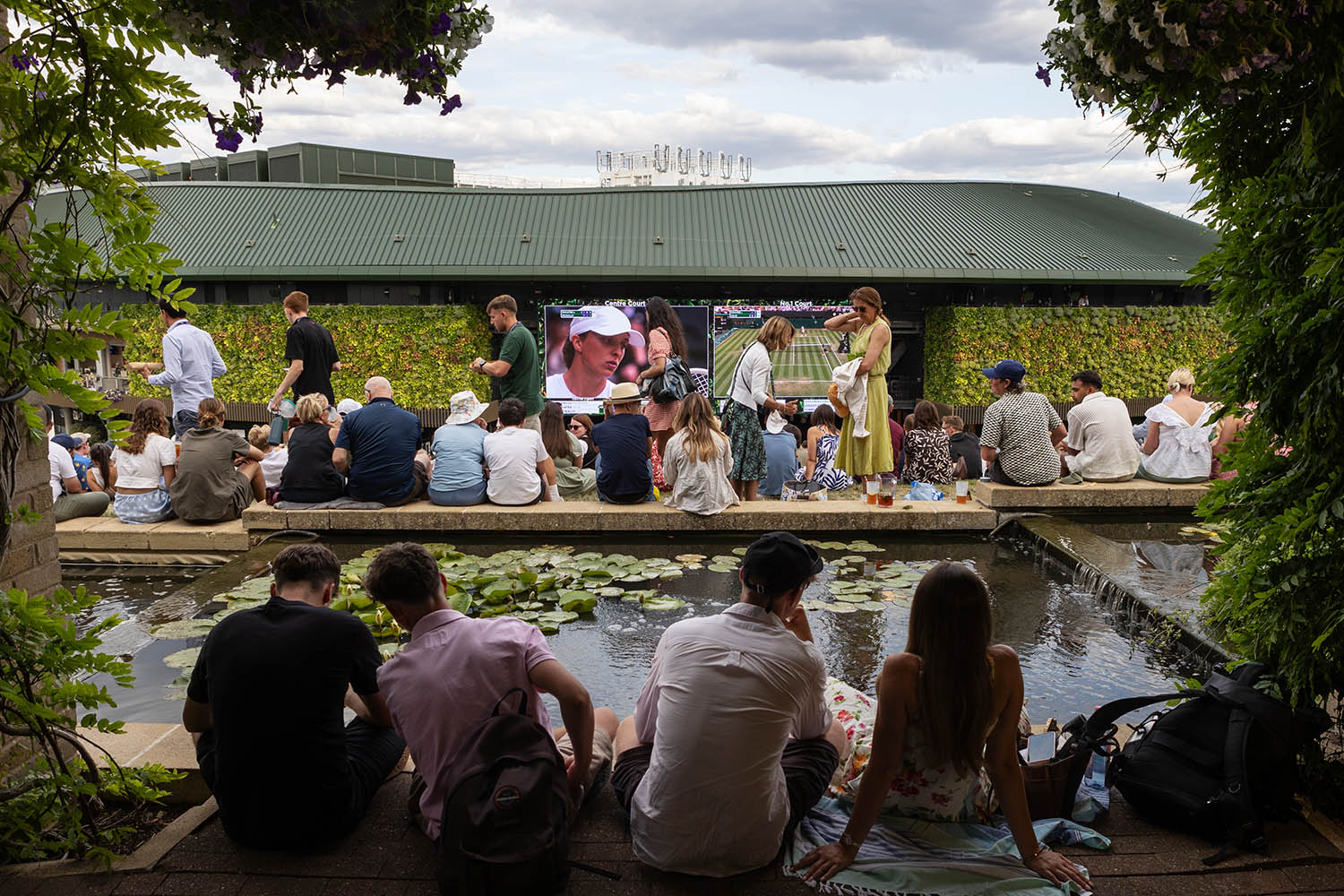
The top of Henman Hill. overlooking court no.1
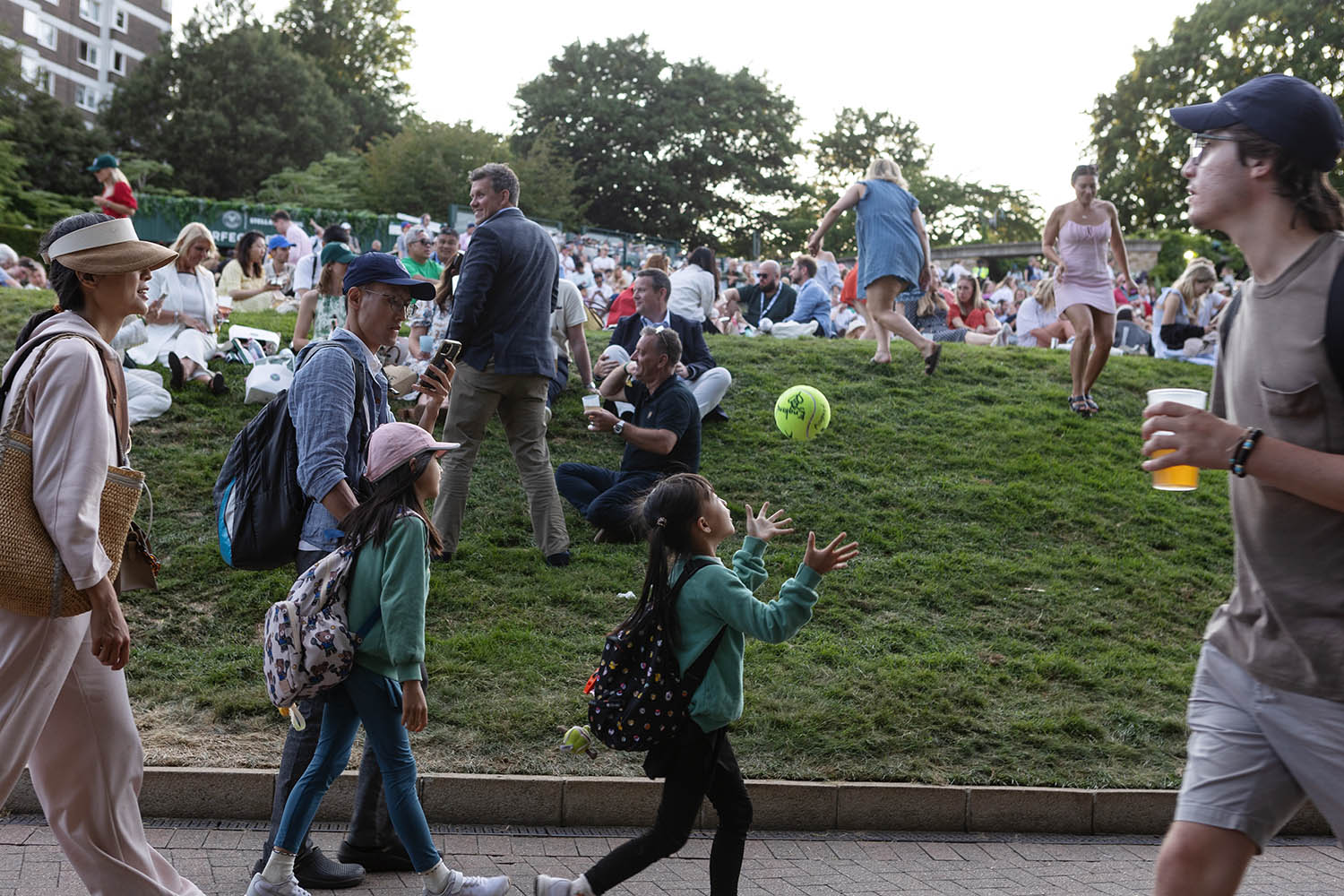
Henman Hill
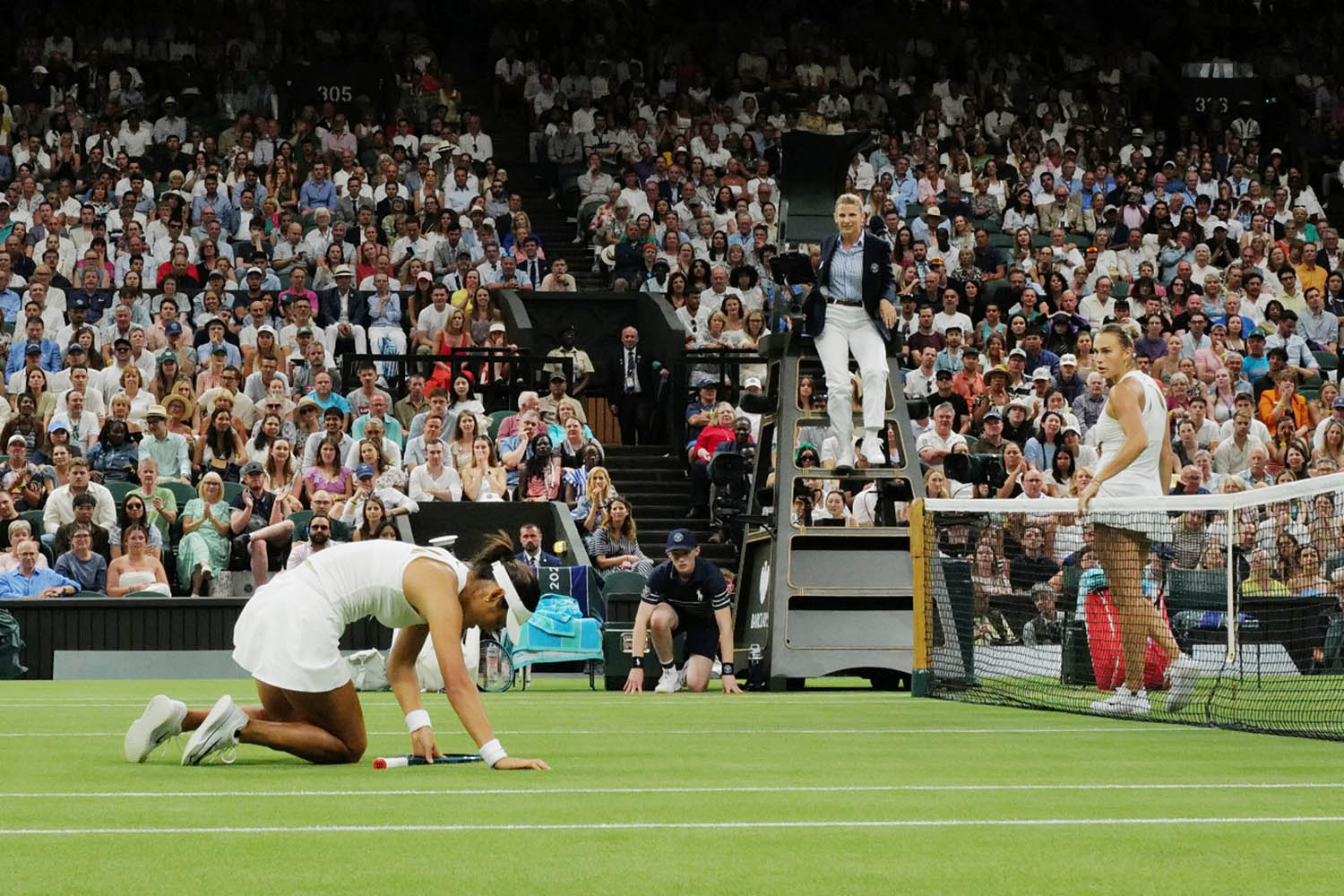
Aryna Sabalenka defeats Emma Raducanu in straight sets on centre court.
How to dress it?
Chrissie Evert went for pretty, Navratilova took a more business-like approach. The Williams sisters wore revealing outfits, but what they revealed were their muscles: dress to intimidate. Raducanu wears a fetching little frock; Sonay Kartal, the only British woman in the fourth round, approaches the matter like a sardonic Shakespearean heroine.
Wimbledon is essentially feminist: the AELTC is not. The US Open was the first of the grand slams to offer equal prize money in 1973. Wimbledon was the last, getting round to it in 2007.
Things are changing. Women’s team sports are increasingly popular. Wimbledon has resisted and at the same time responded, even inadvertently encouraged. Neither Björn Borg’s hippiness nor John McEnroe’s punkishness would have been as effective without Wimbledon as a background.
In the same way the qualities of the far more revolutionary Billie Jean King were set off by Wimbledon. Her athleticism, her outspoken nature and her unabashed taste for victory were made more vivid by Wimbledon’s prissiness. She was a fearsome woman in swoopy specs, winning six times, first in 1966. She went on to lead women’s tennis into a new era of professionalism: making it the No 1 women’s sport.
Tennis, more than any other sport, is about dominance hierarchies, and in the women’s game they tend to be stable, with extended periods of dominance by a single player: King, Navratilova, Serena Williams. We’re now in a period of anarchy. The last eight titles have all been won by different women. There is, then, a vacancy for a queen.
Wimbledon, the first of the grand slam tournaments, spells it out. Women’s sport is enriched by the proximity of men’s sport – and vice versa. More and more sports have realised this. Increasingly, sport celebrates the whole species. And that principle was established.
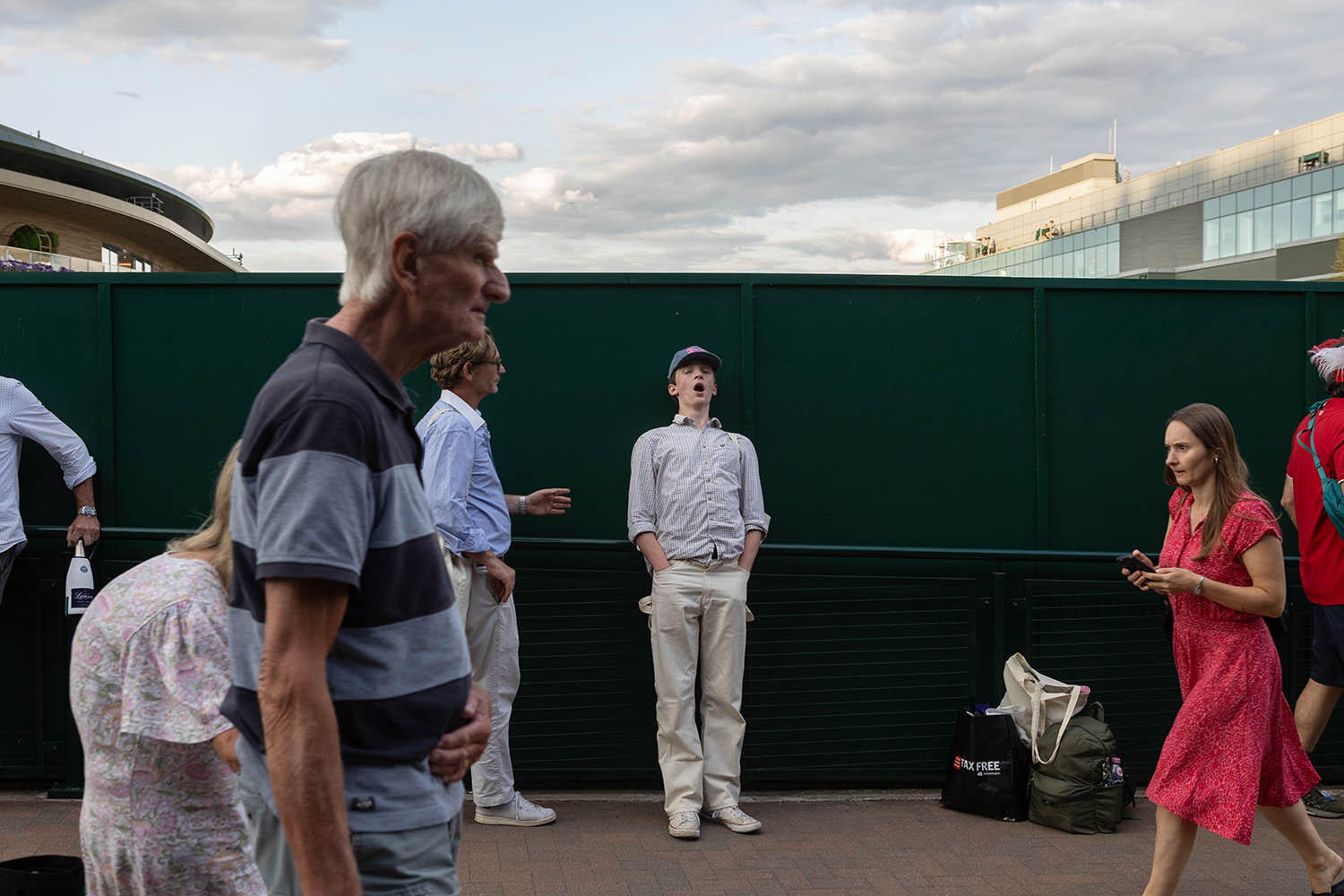
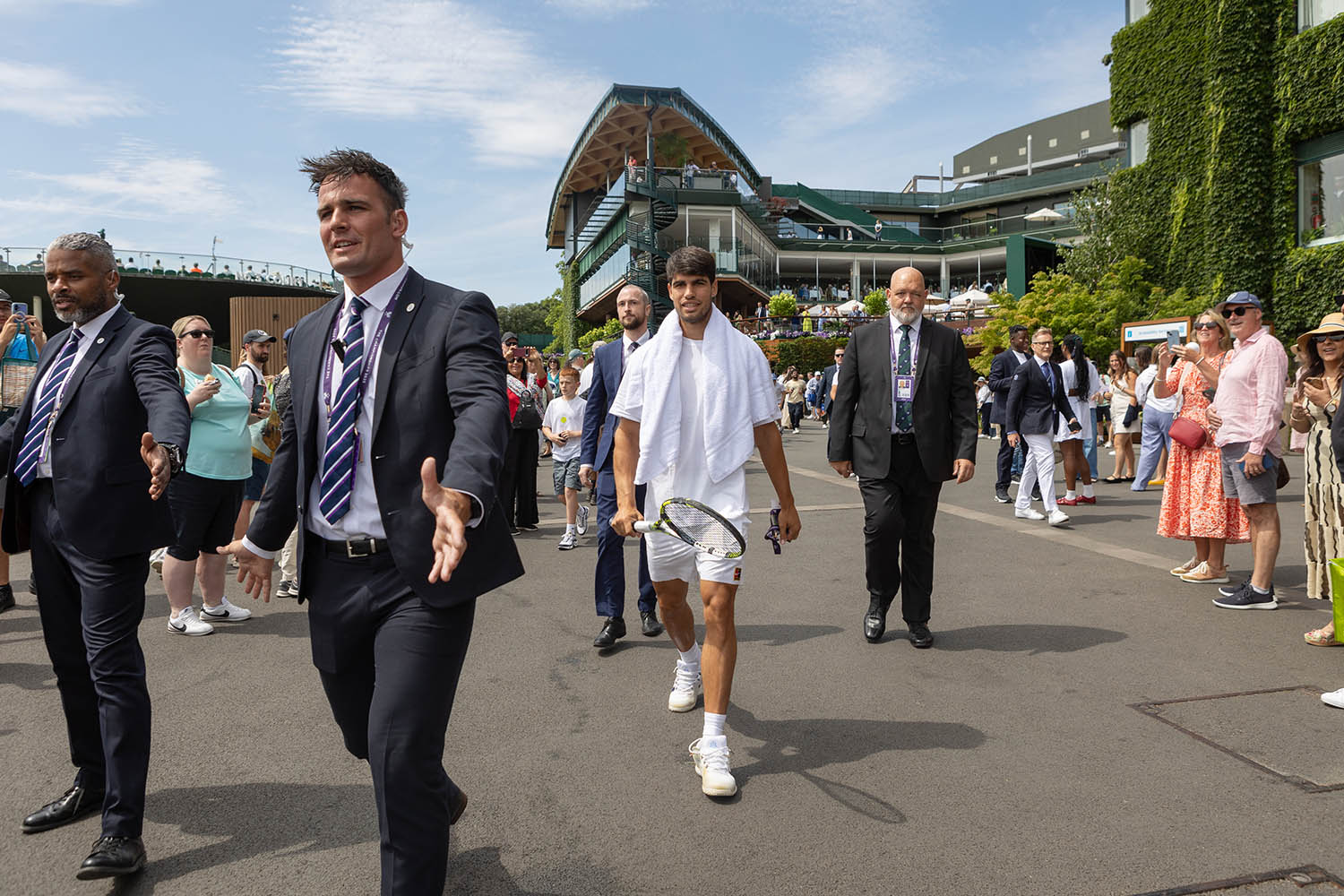
Alcaraz gets an escort to the practice courts through the crowds.
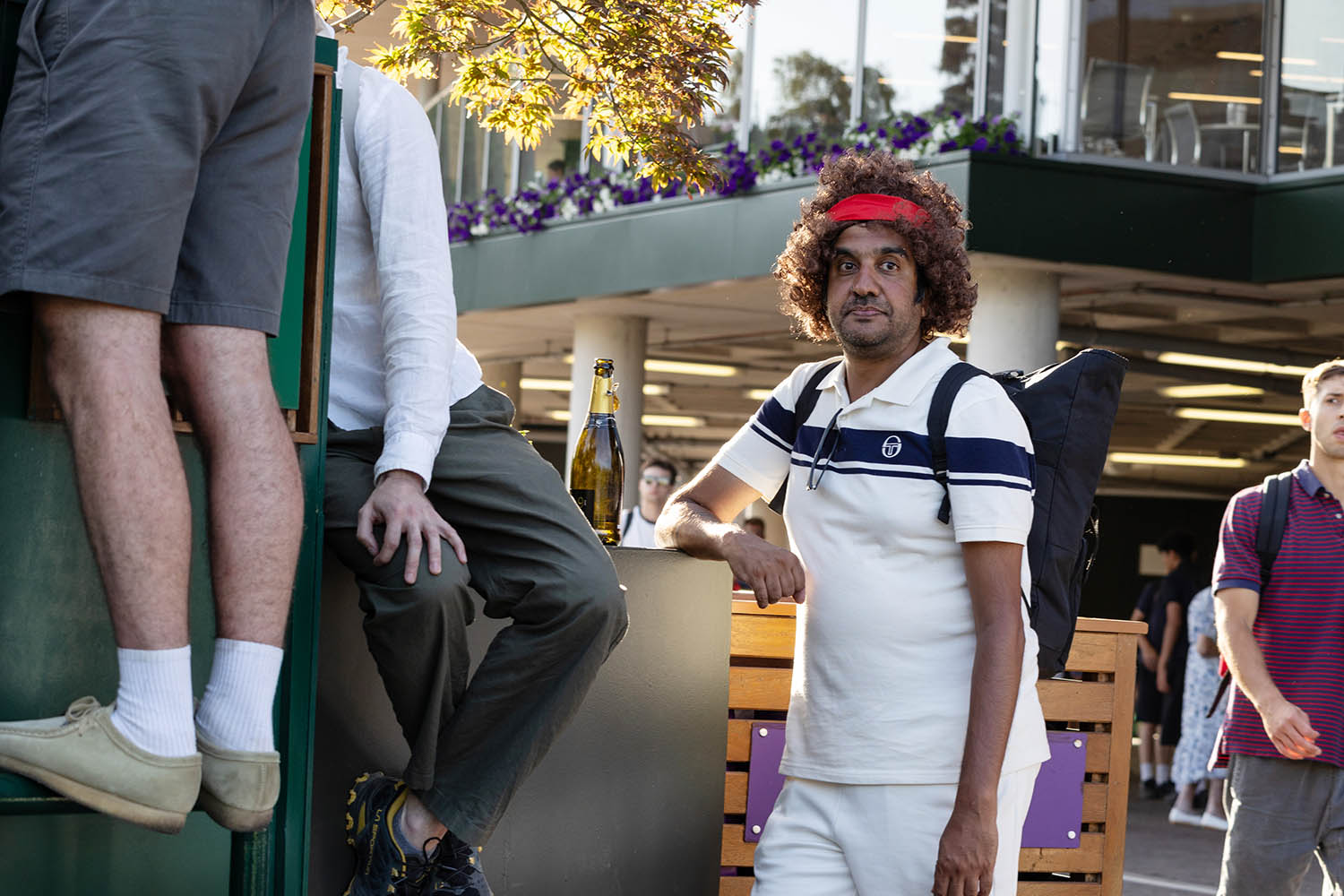
A spectator dressed as John McEnroe

Boxer Anthony Joshua is greeted by fans
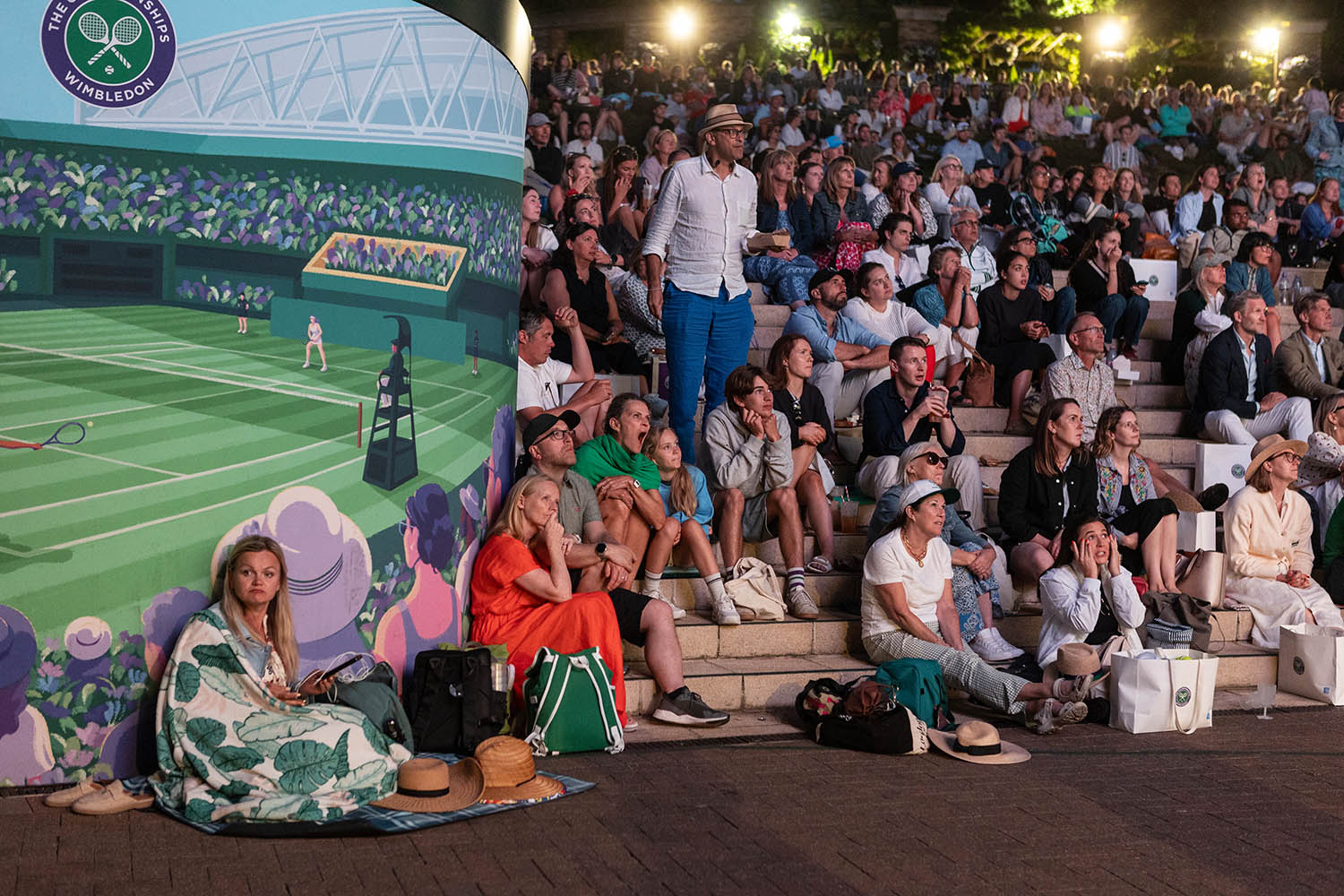
The bottom of Henman Hill at night, during Emma Radacanu's match.
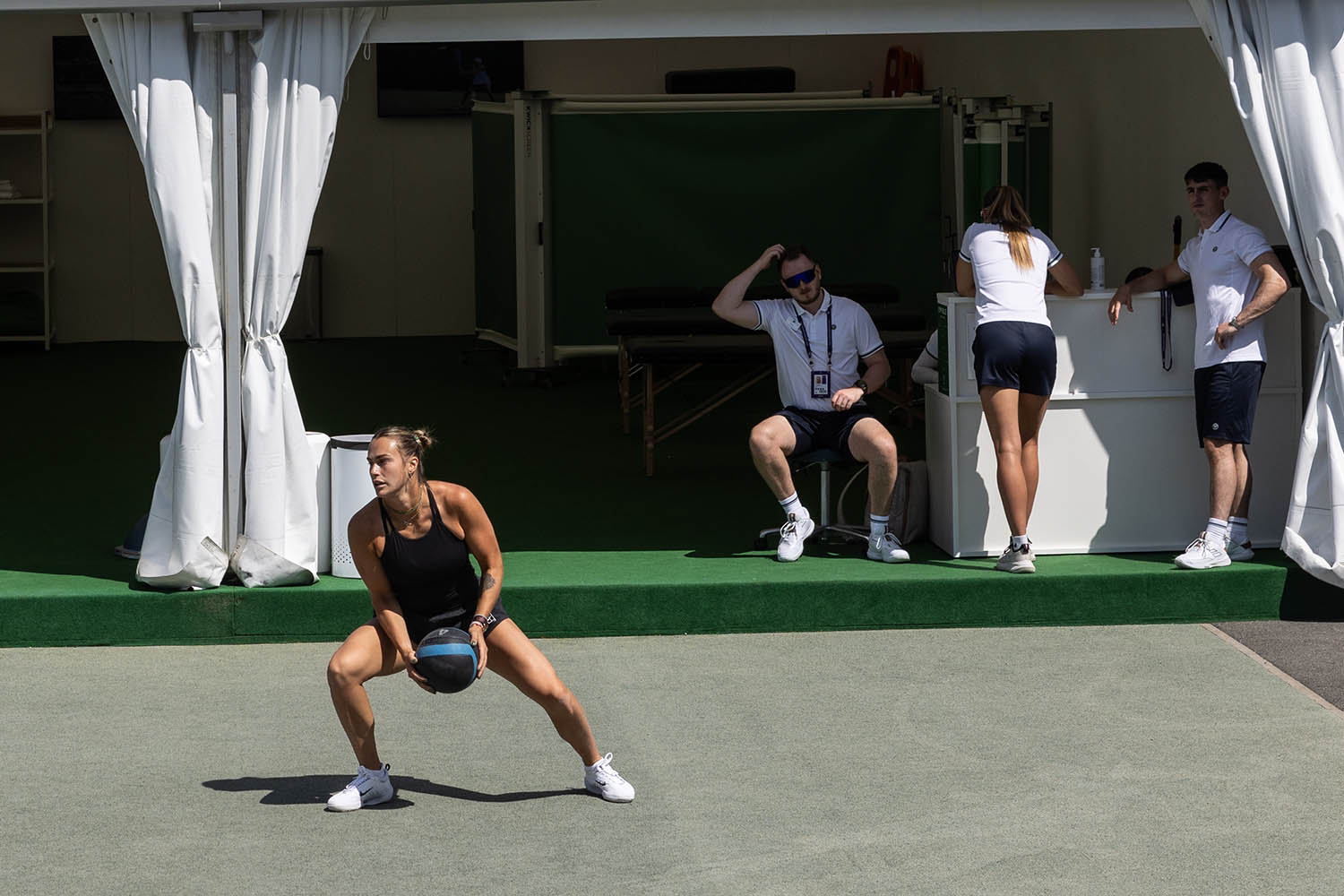
Player Aryna Sabelenka trains before her match with Emma Raducanu
